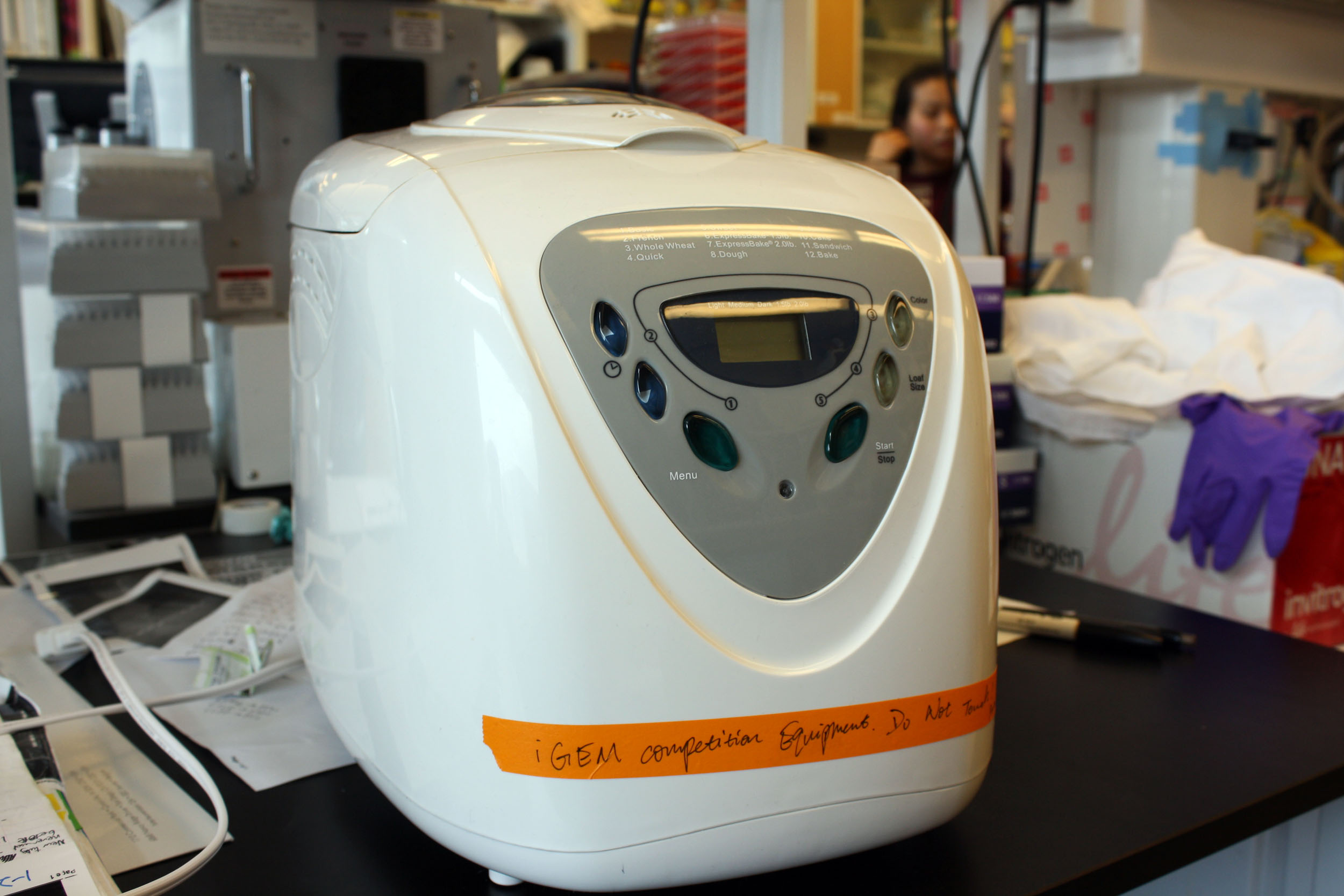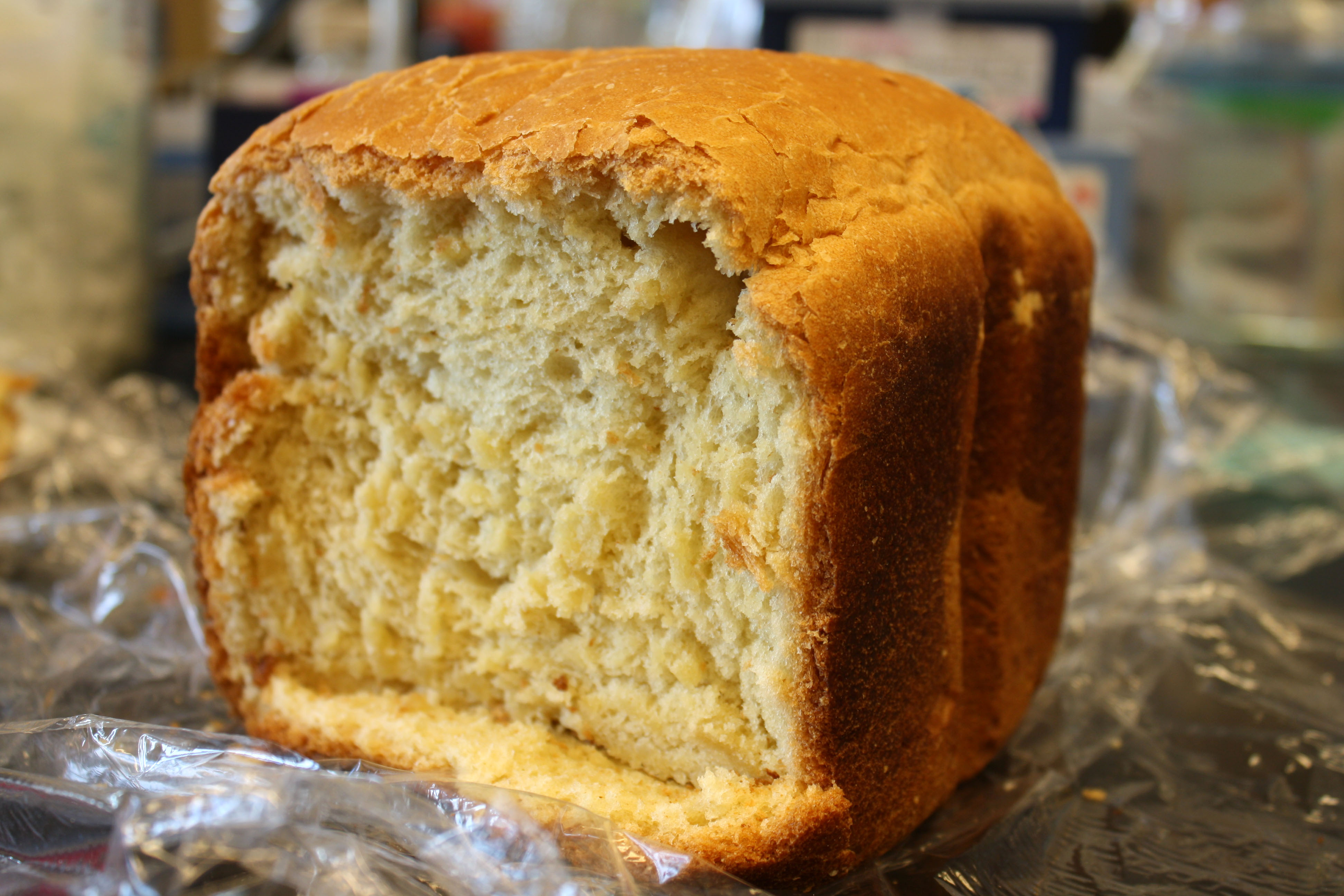|
|
| Line 34: |
Line 34: |
| | | | |
| | To determine how VitaYeast may differ from normal dry yeast in bread, we ran a trial where we baked a regular 1.5 pound loaf of bread using store-bought dry active yeast. The purpose of doing so is to determine that the bread machine is functional and to determine how tall a 1.5 pound loaf of bread is. | | To determine how VitaYeast may differ from normal dry yeast in bread, we ran a trial where we baked a regular 1.5 pound loaf of bread using store-bought dry active yeast. The purpose of doing so is to determine that the bread machine is functional and to determine how tall a 1.5 pound loaf of bread is. |
| - | [[File:IMG 8907 2.jpg|thumb|left|300px|The resulting bread from using the WT yeast in baking]]
| + | |
| | The first major question for us, was if baking bread using Vitayeast, which is lab yeast, is feasible. The answer to this question was a resounding yes, as we found out during our first trial of baking with lab yeast. Since we established this, we moved onto other questions. | | The first major question for us, was if baking bread using Vitayeast, which is lab yeast, is feasible. The answer to this question was a resounding yes, as we found out during our first trial of baking with lab yeast. Since we established this, we moved onto other questions. |
| | | | |
| Line 40: |
Line 40: |
| | | | |
| | 2. What is the quantity of Vitamin A inside the bread? | | 2. What is the quantity of Vitamin A inside the bread? |
| - | | + | [[File:IMG 8907 2.jpg|thumb|left|300px|The resulting bread from using the WT yeast in baking]] |
| | In addition to the loaf of VitaYeast bread, we obtained wild-type yeast for the same strain as another benchmark for the VitaYeast. In addition to seeing how using lab yeast would affect the height of the bread, we also wanted to see how the using normal wild-type yeast to bake would compare to store-bought dry yeast. We also wanted to use the wild-type yeast to compare how much more Vitamin A the VitaYeast bread has. | | In addition to the loaf of VitaYeast bread, we obtained wild-type yeast for the same strain as another benchmark for the VitaYeast. In addition to seeing how using lab yeast would affect the height of the bread, we also wanted to see how the using normal wild-type yeast to bake would compare to store-bought dry yeast. We also wanted to use the wild-type yeast to compare how much more Vitamin A the VitaYeast bread has. |
| | | | |
Baking VitaBread

The bread machine we purchased from Amazon.com
In order to determine whether VitaYeast is able to be utilized for the applications that we envisioned, we used it to bake bread and hope to see how vitamin-enriched our bread will be. We bought a bread machine from Amazon (here) and placed it in the lab.
See the protocol for baking Vitabread here.
Benchmarking
In order to control the situation as much as possible, we used the same recipe (found here) for all the trials and tried to match up the amount of yeast as best as we could. We assigned the height of the bread as a quantitative benchmark to see how VitaYeast fared in baking.
For baking bread, we used VitaYeast that only produced vitamin A, as it was the only one available at the time. From hereon, the term "VitaYeast" refers to this type of VitaYeast.
To determine how VitaYeast may differ from normal dry yeast in bread, we ran a trial where we baked a regular 1.5 pound loaf of bread using store-bought dry active yeast. The purpose of doing so is to determine that the bread machine is functional and to determine how tall a 1.5 pound loaf of bread is.
The first major question for us, was if baking bread using Vitayeast, which is lab yeast, is feasible. The answer to this question was a resounding yes, as we found out during our first trial of baking with lab yeast. Since we established this, we moved onto other questions.
1. How does using dry yeast and lab yeast change the bread? (In this case, height)
2. What is the quantity of Vitamin A inside the bread?

The resulting bread from using the WT yeast in baking
In addition to the loaf of VitaYeast bread, we obtained wild-type yeast for the same strain as another benchmark for the VitaYeast. In addition to seeing how using lab yeast would affect the height of the bread, we also wanted to see how the using normal wild-type yeast to bake would compare to store-bought dry yeast. We also wanted to use the wild-type yeast to compare how much more Vitamin A the VitaYeast bread has.
Height Measurements
| Type of Yeast Used
| Height (cm)
|
| Active Dry Yeast
| 16.5
|
| Vitamin A Yeast
| 12.5
|
| WT Yeast
| 11.5
|
Bread Baking

The Vitabread looks normal.
We determined the OD of lab yeast required based on the amount in one packet of dry active yeast. (Described here)
Both the WT yeast and Vitayeast resulted in successful bread! To make sure that our Vitabread will not be inflicted by the same problem as golden rice (i.e. orange bread), we sliced the VitaBread to see that there is no orange pigment in the bread.
 "
"




